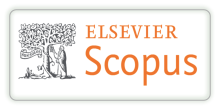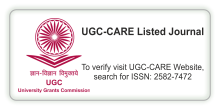ANCIENT INDIA: KINGDOM AND TERRITORY
DOI:
https://doi.org/10.29121/shodhkosh.v5.i7.2024.3960Keywords:
Kingdom, Ancient, Legacy, TerritoriesAbstract [English]
Ancient India is renowned for its rich history, characterized by a diverse array of kingdoms and territories. This period, spanning over millennia, saw the rise and fall of numerous dynasties, each uniquely contributing to the cultural, political, and social landscape of the subcontinent. Key kingdoms, such as the Mauryas, Guptas, Cholas, and Pandyas, played pivotal roles in shaping India's legacy. Territorial expansions were often marked by strategic conquests, alliances, and the spread of art, religion, and philosophy. This study explores the intricate dynamics of power, governance, and territorial boundaries in ancient India, highlighting how these factors collectively forged the nation's historical identity.
References
Thapar, R. (2002). Early India: From the origins to AD 1300. University of California Press.
Kulke, H., & Rothermund, D. (2004). A history of India (4th ed.). Routledge. DOI: https://doi.org/10.4324/9780203391266
Keay, J. (2000). India: A history. Atlantic Monthly Press.
Sharma, R. S. (2006). India's ancient past. Oxford University Press. DOI: https://doi.org/10.1093/acprof:oso/9780195687859.001.0001
Singh, U. (2008). A history of ancient and early medieval India: From the Stone Age to the 12th century. Pearson Longman.
Basham, A. L. (1954). The wonder that was India. Macmillan.
Majumdar, R. C., Raychaudhuri, H. C., & Datta, K. (1953). An advanced history of India. Macmillan.
Allchin, B., & Allchin, F. R. (1982). The rise of civilization in India and Pakistan. Cambridge University Press.
Downloads
Published
How to Cite
Issue
Section
License
Copyright (c) 2024 Dr. Bhumika B. Vasava

This work is licensed under a Creative Commons Attribution 4.0 International License.
With the licence CC-BY, authors retain the copyright, allowing anyone to download, reuse, re-print, modify, distribute, and/or copy their contribution. The work must be properly attributed to its author.
It is not necessary to ask for further permission from the author or journal board.
This journal provides immediate open access to its content on the principle that making research freely available to the public supports a greater global exchange of knowledge.































